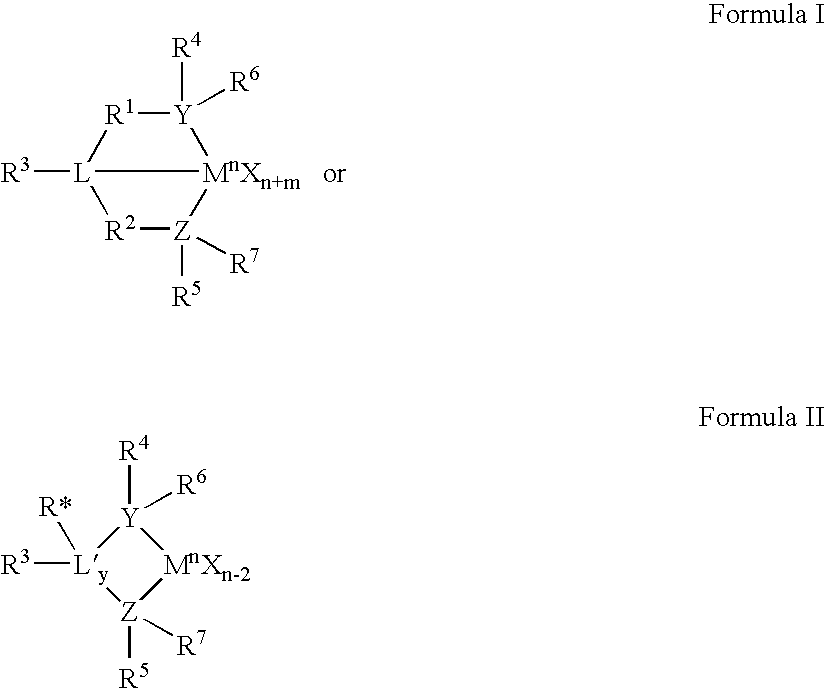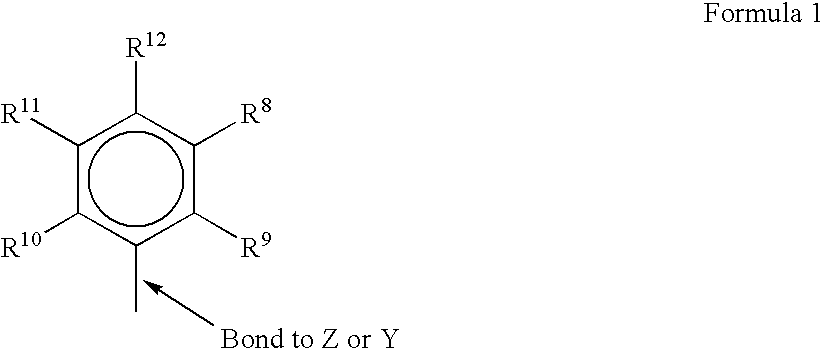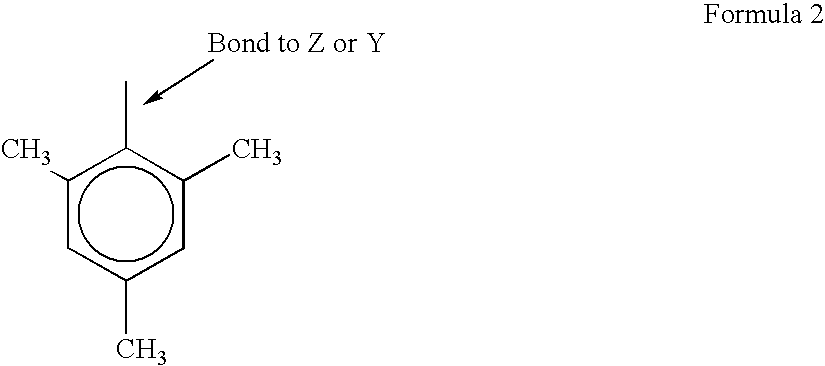Catalyst composition, method of polymerization, and polymer therefrom
a technology of catalyst composition and polymerization method, applied in the direction of catalyst activation/preparation, physical/chemical process catalyst, chemical/physical process, etc., can solve the problems of cumbersome blending step of manufacturing/fabrication process, cumbersome processing, and difficult processing
- Summary
- Abstract
- Description
- Claims
- Application Information
AI Technical Summary
Benefits of technology
Problems solved by technology
Method used
Image
Examples
illustration 7
e, A or B is contacted with the activator (on-line) while a separate solution of either A or B is contacted with activator off-line. Then both stream of A or B and activator are contacted in-line before entering the reactor.
Illustration 8: A is contacted on-line with B. Then, an activator is fed to in-line to the A and B mixture.
Illustration 9: A is activated with activator off-line. Then A and activator is contacted on-line with B. Then, an activator is fed to in-line to the A and B and activator mixture.
In one embodiment, this invention is directed toward the polymerization or copolymerization reactions involving the polymerization of one or more monomers having from 2 to 30 carbon atoms, preferably 2 to 12 carbon atoms, and more preferably 2 to 8 carbon atoms. The invention is particularly well suited to the copolymerization reactions involving the polymerization of one or more olefin monomers of ethylene, propylene, butene-1, pentene-1, 4-methyl-pentene-1, hexene-1, octene-1, de...
example 3
An ethylene-hexene copolymer was produced in a 14-inch (35.6 cm) pilot plant scale gas phase reactor operating at 80° C. and 320 psig (2.2 MPa) total reactor pressure having a water cooled heat exchanger. Ethylene was fed to the reactor at a rate of about 53 pounds per hour (24 kg / hr), hexene was fed to the reactor at a rate of about 0.5 pounds per hour (0.22 kg / hr) and hydrogen was fed to the reactor at a rate of 9 mPPH. Ethylene was fed to maintain 220 psi (1.52 MPa) ethylene partial pressure in the reactor. The production rate was about 25 PPH. The reactor was equipped with a plenum having about 990 PPH of recycle gas flow. (The plenum is a device used to create a particle lean zone in a fluidized bed gas-phase reactor.) A tapered catalyst injection nozzle having a 0.055 inch (0.12) hole size was positioned in the plenum gas flow. A solution of 1 wt % Catalyst B in hexane catalyst was mixed with 0.2 lb / hr (0.09 kg / hr) hexene in a {fraction (3 / 16)} inch (0.48 cm) stainless steel t...
example 4
An ethylene-hexene copolymer was produced in a 14-inch (35.6 cm) pilot plant scale gas phase reactor operating at 85° C. and 320 psig (2.2 MPa) total reactor pressure having a water cooled heat exchanger. Ethylene was fed to the reactor at a rate of about 50 pounds per hour (22.7 kg / hr), some of the hexene was fed to the reactor at a rate of about 0.7 pounds per hour (0.32 kg / hr) and hydrogen was fed to the reactor at a rate of 11 mPPH. Ethylene was fed to maintain 220 psi (1.52 MPa) ethylene partial pressure in the reactor. The production rate was about 29 PPH. The reactor was equipped with a plenum having about 970 PPH of recycle gas flow. (The plenum is a device used to create a particle lean zone in a fluidized bed gas-phase reactor.) A tapered catalyst injection nozzle having a 0.055 inch (0.14 cm) hole size was positioned in the plenum gas flow. A solution of 1 wt % Catalyst B in hexane catalyst was mixed with 0.2 lb / hr (0.09 kg / hr) hexene in a {fraction (3 / 16)} inch (0.48 cm)...
PUM
| Property | Measurement | Unit |
|---|---|---|
| temperature | aaaaa | aaaaa |
| density | aaaaa | aaaaa |
| melt index | aaaaa | aaaaa |
Abstract
Description
Claims
Application Information
 Login to View More
Login to View More - R&D
- Intellectual Property
- Life Sciences
- Materials
- Tech Scout
- Unparalleled Data Quality
- Higher Quality Content
- 60% Fewer Hallucinations
Browse by: Latest US Patents, China's latest patents, Technical Efficacy Thesaurus, Application Domain, Technology Topic, Popular Technical Reports.
© 2025 PatSnap. All rights reserved.Legal|Privacy policy|Modern Slavery Act Transparency Statement|Sitemap|About US| Contact US: help@patsnap.com



